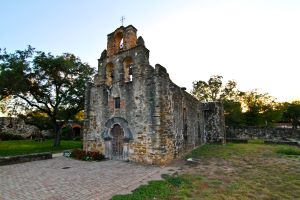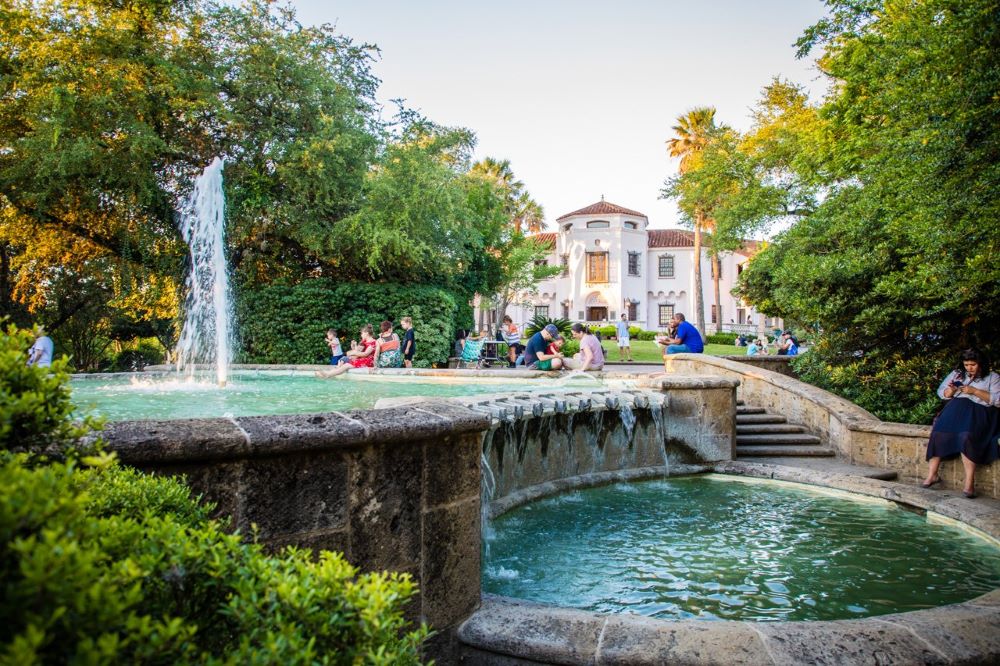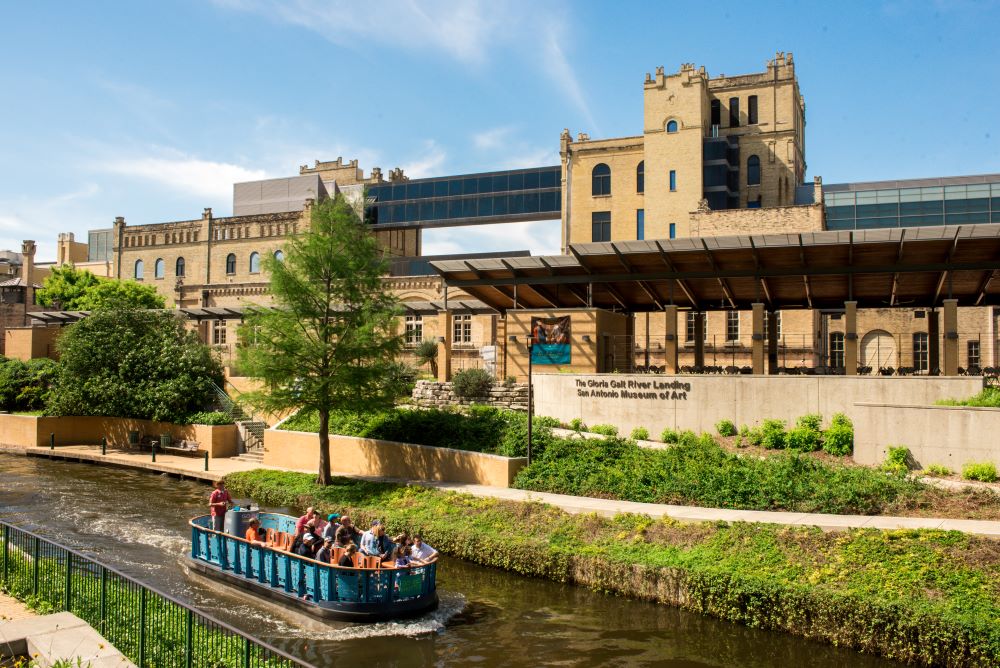Get ready for a second Metroplex in Texas, as the San Antonio and Austin metropolitan areas, connected by the I-35 corridor, are expanding rapidly.
The emerging mega-region is currently home to 5 million-plus people. By 2050, that number is projected to exceed 8 million. For comparison, the similarly surging Dallas-Fort Worth Metroplex is presently populated by nearly 8 million people.
This summer, news platform Axios polled area residents on suggested names for the mega-region, with responses that included San Austin, Austonio and the winner, South Central Metroplex. Residents proposed Centroplex and S-A Megaplex.
While Austin’s ever-evolving cityscape evokes a big-city feel, San Antonio, currently America’s seventh-most populous city with around 1.4 million people, retains its small-town vibe with a “hidden treasure” allure.
Mark Twain recognized San Antonio’s distinctiveness over a century ago when he named it one of only four unique cities in the U.S., along with San Francisco, New Orleans and Boston. Contributing elements include a remarkable collection of group-ready cultural, artistic and heritage sites that keep the city firmly grounded amid the progress.
Last year, San Antonio became the seventh American city and the first in Texas chosen by Google for its global Arts and Culture platform. Grouping tours by category—heritage, local hot spots, visual arts and UNESCO history—the San Antonio landing page is a great resource for planners. Planners can add cultural richness to their group’s agenda with the evocative venues and activities listed within.
[Related: Meetings Today LIVE! Visits San Antonio for National Event]
Everlasting Memories
Originally a Coahuiltecan Indian village, San Antonio was founded in 1718 by Franciscan monks. Leading Spain’s colonization efforts, they constructed a series of missions, starting with San Antonio de Valero. Transformed into a fort in 1794, the mission was subsequently garrisoned by a Spanish cavalry unit that named it after their hometown of Alamo de Parras, or the Alamo.
For 13 days in 1836, 189 Texians (pre-Texans), Tejanos, patriots and colonists defended the fort against a Mexican force of 4,000 men. Forty-six days later, outnumbered Texian and American volunteers defeated the Mexican army at San Jacinto, outside present-day Houston, with “Remember the Alamo!” as their rallying cry.

Today, the “Shrine of Texas Liberty” anchors The Alamo Visitor Center and Museum. Scheduled for 2027, this dynamic new cultural destination will repurpose the historic Crockett and Woolworth buildings and recapture the Mission site and battlefield footprint. Group resources will include event space, a rooftop restaurant and 4D theater.
Opened last year behind the iconic Alamo Church, the Ralston Family Collections Center features 10,000 square feet of gallery space with displays that include the Phil Collins Collection. Enamored of the Alamo story since childhood, the English rock legend amassed priceless Alamo and Texana artifacts. In 2014, he donated his complete collection to the Texas General Land Office, guardian of the Alamo.
San Antonio’s other four Spanish Colonial missions, Concepción, San José, San Juan and Espada, form San Antonio Missions National Historical Park, the only UNESCO World Heritage Site in Texas. Connected via the River Walk’s eight-mile Mission Reach extension, these still-active Catholic parishes are a great option for excursions by foot, bike or car.
Artful Encounters
In 1950, oil heiress Marion Koogler McNay bequeathed her estate, splendid Spanish Colonial Revival mansion and collection of more than 700 works of European and American art to the city of San Antonio.

As the first modern art museum in Texas, the McNay Art Museum, located in suburban Alamo Heights, is one of the state’s cultural treasures. Expanded to 22,000-plus pieces spanning the Medieval to modern eras, art beguiles at every turn, including works by Pablo Picasso and Georgia O’Keeffe. Outdoor sculptures adorn 25 acres of beautifully landscaped gardens. Versatile rentals include the intimate Octagon room, Courtyard, Leeper Auditorium and Stieren Center for Exhibitions, with buyouts available.
Reviving the former 1930 San Antonio Public Library building, the Briscoe Western Art Museum houses a stirring collection depicting the American West, including paintings, sculpture, photography and Western, Native American and Spanish and Mexican colonial-era art. Highlights include saddles belonging to Western icons Roy Rogers, “Buffalo Bill” Cody and Pancho Villa. Museum events include gallery access.
[Related: Major Texas Developments Keep Pace With Tourism Growth]
Located on an enchanting River Walk bend, the adjacent three-story Jack Guenther Pavilion flexibly hosts corporate and social events in alluring indoor and outdoor spaces such as the 350-capacity River View Room and 500-capacity McNutt Sculpture Garden.

Another River Walk treasure is the Smithsonian-affiliated Witte Museum. Approaching its centennial in 2026, this nationally acclaimed institution, minutes from downtown on the city’s Broadway Cultural Corridor, tells the Texas story from the natural, scientific and cultural perspective. Amid immersive displays including dinosaur skeletons, dioramas and the moving People of the Pecos exhibits, the Witte hosts up to 1,500-capacity groups in versatile spaces that include multiple event halls, a native plant garden, a covered courtyard lined with majestic oak trees and historic Spanish Colonial-era buildings.
Housed in the former Lone Star Brewery on the banks of the River Walk’s Museum Reach extension, the San Antonio Museum of Art, or SAMA, is renowned for its comprehensive assembly of ancient Greek, Roman and Egyptian art. Other collections include Latin American and Asian art and works by internationally recognized contemporary Texas artists. While SAMA is currently not accepting event rentals, guided and self-guided tours are available.
Mapping Cultural Connections
Born in 1945, Linda Pace offers a fascinating study in the weave of San Antonio life. In 1948, her mother descended from a German-Swiss family that once owned San Antonio’s historic Pearl Brewery, and her father founded Pace Foods, selling pickles, jellies and picante sauce, “the maple syrup of San Antonio.”
In 1967, Pace married her childhood friend Christopher “Kit” Goldsbury in San Antonio. After purchasing Pace Foods in 1982, they expanded the company internationally before divorcing in 1987. In 1994, Goldsbury, who started out on the company’s assembly line, sold Pace Foods to Campbell Soup for $1.1 billion.
[Related: The Magic of Murals and Public Art in Texas]
In an unusual full-circle move, he then envisioned and funded the transformation of the dilapidated Pearl Brewery campus into a culinary-driven mixed-use neighborhood, including bringing in a Latin-focused satellite of the Culinary Institute of America. Today, the fully-fledged Pearl District offers abundant dining and other options for groups.
Linda subsequently made her name as an artist, collector, philanthropist and contemporary art patron before passing away in 2007. For an inspiring off-agenda experience, schedule a free-admission visit to see her namesake Foundation Collection of paintings, sculptures, installations and video works at stunning Ruby City in downtown San Antonio.
Managed and mapped by the San Antonio Department of Arts & Culture, more than 600 works of art adorn public spaces across the city.
From the historic West Side to the vibrant North St. Mary’s Strip entertainment corridor of restaurants, bars and nightclubs, outdoor murals are a big part of the show. Leading programs include the San Antonio Street Art Initiative, which launched in 2018 with 16 murals by local artists under I-35 near SAMA.
Among the city’s top-rated operators, Mural Ride Bike Tours offers immersive guided explorations of San Antonio’s vibrant street art scene. Ideal for corporate outings or teambuilding activities, customizable experiences are available for small or large groups.






